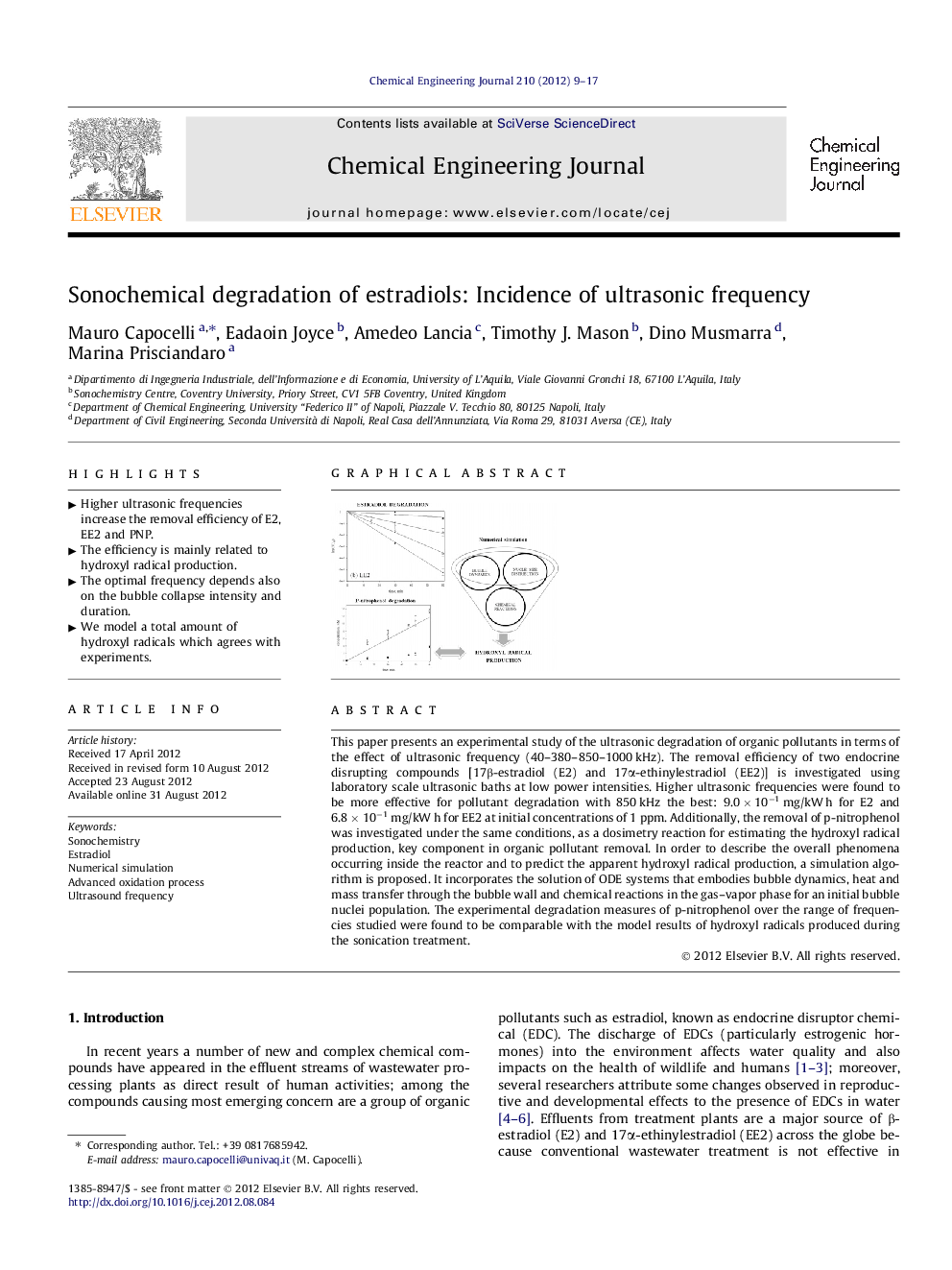| کد مقاله | کد نشریه | سال انتشار | مقاله انگلیسی | نسخه تمام متن |
|---|---|---|---|---|
| 149325 | 456431 | 2012 | 9 صفحه PDF | دانلود رایگان |

This paper presents an experimental study of the ultrasonic degradation of organic pollutants in terms of the effect of ultrasonic frequency (40–380–850–1000 kHz). The removal efficiency of two endocrine disrupting compounds [17β-estradiol (E2) and 17α-ethinylestradiol (EE2)] is investigated using laboratory scale ultrasonic baths at low power intensities. Higher ultrasonic frequencies were found to be more effective for pollutant degradation with 850 kHz the best: 9.0 × 10−1 mg/kW h for E2 and 6.8 × 10−1 mg/kW h for EE2 at initial concentrations of 1 ppm. Additionally, the removal of p-nitrophenol was investigated under the same conditions, as a dosimetry reaction for estimating the hydroxyl radical production, key component in organic pollutant removal. In order to describe the overall phenomena occurring inside the reactor and to predict the apparent hydroxyl radical production, a simulation algorithm is proposed. It incorporates the solution of ODE systems that embodies bubble dynamics, heat and mass transfer through the bubble wall and chemical reactions in the gas–vapor phase for an initial bubble nuclei population. The experimental degradation measures of p-nitrophenol over the range of frequencies studied were found to be comparable with the model results of hydroxyl radicals produced during the sonication treatment.
Figure optionsDownload as PowerPoint slideHighlights
► Higher ultrasonic frequencies increase the removal efficiency of E2, EE2 and PNP.
► The efficiency is mainly related to hydroxyl radical production.
► The optimal frequency depends also on the bubble collapse intensity and duration.
► We model a total amount of hydroxyl radicals which agrees with experiments.
Journal: Chemical Engineering Journal - Volume 210, 1 November 2012, Pages 9–17